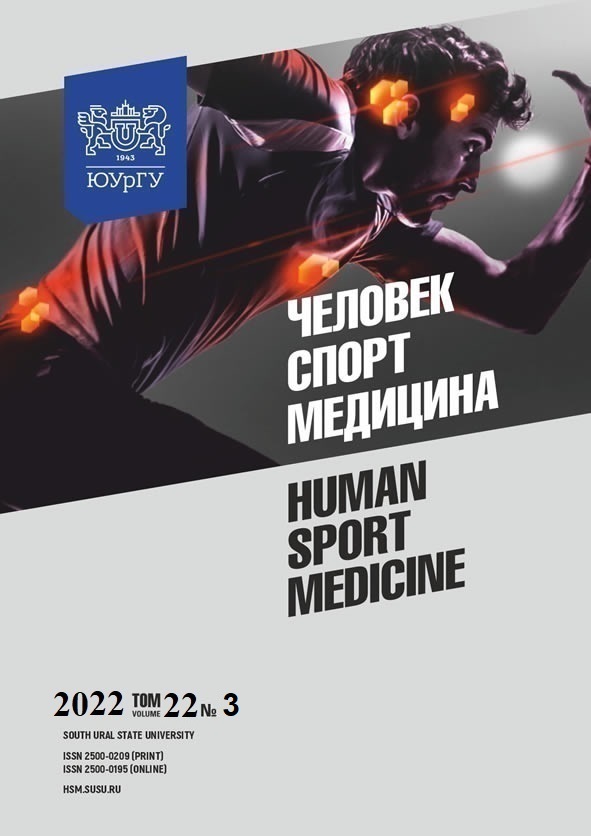MORPHOLOGICAL AND PSYCHOPHYSIOLOGICAL INDICATORS OF ADAPTATION TO UNIVERSITY AMONG STUDENTS OF THE NORTHERN REGION
Abstract
Aim. The paper aims to identify the morphological and psychophysiological features of adaptation to university life and their relationship among students of the northern region. Materials and methods. The study involved 186 first-year students of Surgut State Pedagogical University, including 35 male and 151 female university students. Basic anthropometric (body length and body mass) and body composition characteristics were measured using the Tanita BC-601. Psychophysiological data were recorded using the NS-PsychoTest system. Descriptive statistics, a one-way analysis of variance (mean comparisons) and canonical analysis were performed in the Statistica 7.0 software. Results. Mean body size, musculoskeletal mass and body water were significantly higher in the male group with reduced fat mass compared to the female group. The data obtained reflect significantly greater speed-strength performance of male students and lower reliability of their neurodynamic response. The relationship between morphological and neurodynamic characteristics that reflected the consistency of musculoskeletal development and speed-strength performance was found only in male students. Conclusion. Total body size and motor development were found to be greater in male compared with female students. Conformity with the age and gender norms of morphological development and mean psychophysiological values allows describing body reserves and neurophysiological processes during adaptation to university as optimal.
References
References on translit
Copyright (c) 2022 Human. Sport. Medicine

This work is licensed under a Creative Commons Attribution-NonCommercial-NoDerivatives 4.0 International License.















